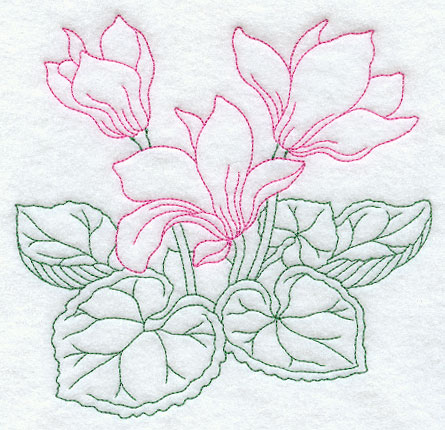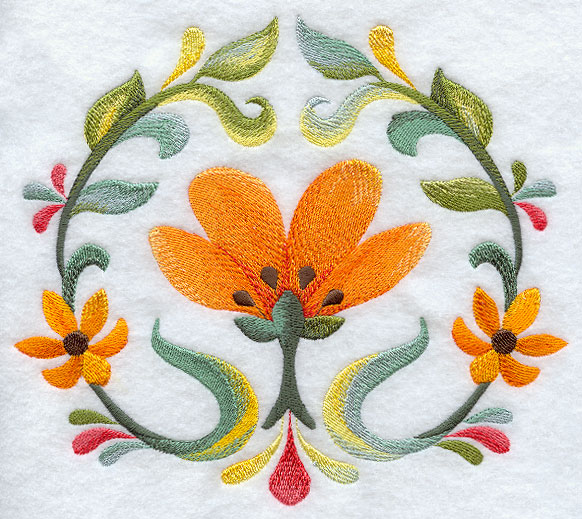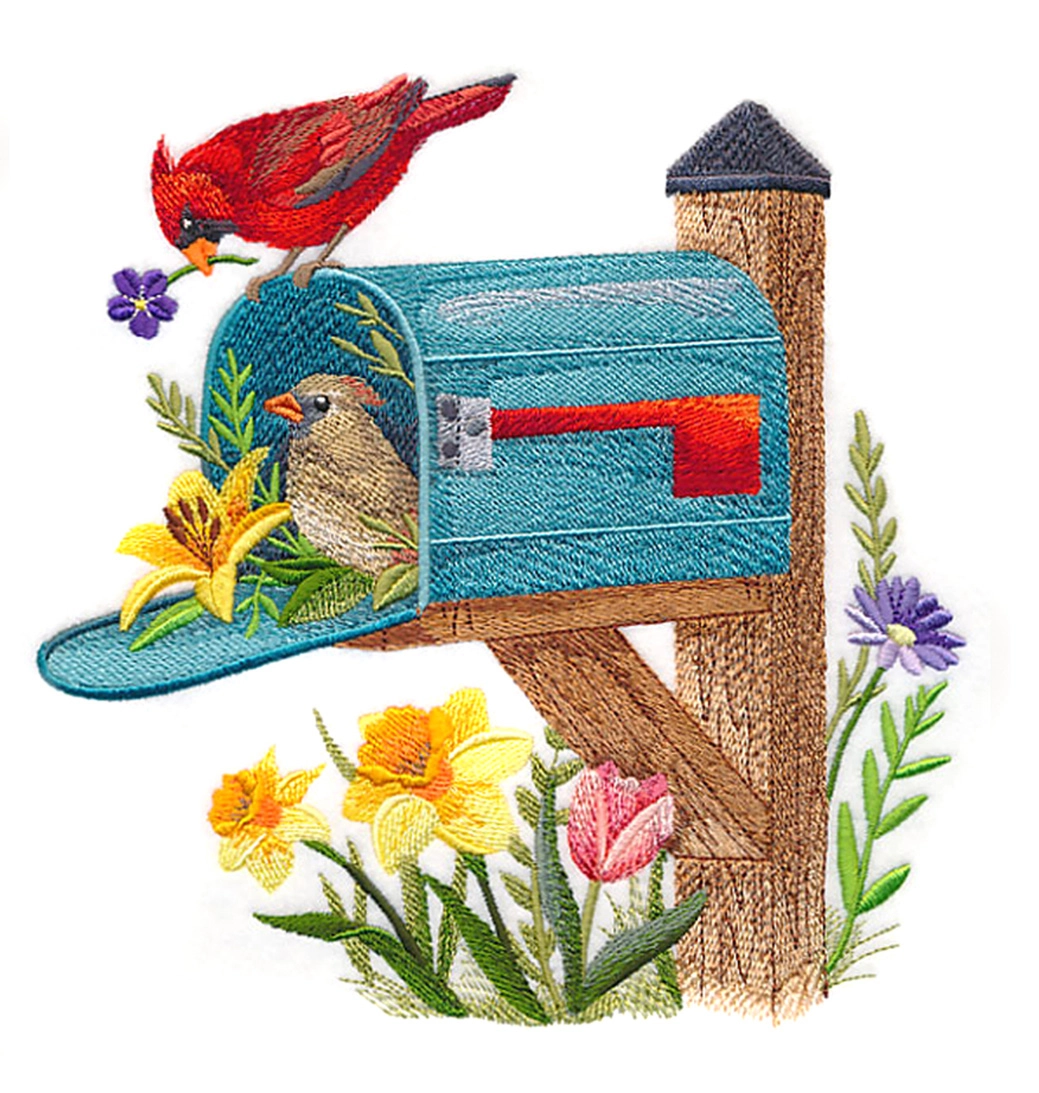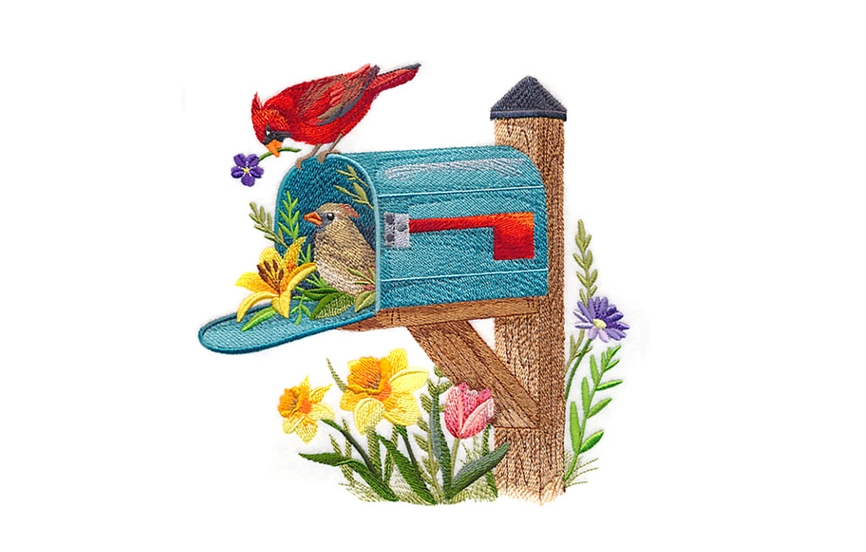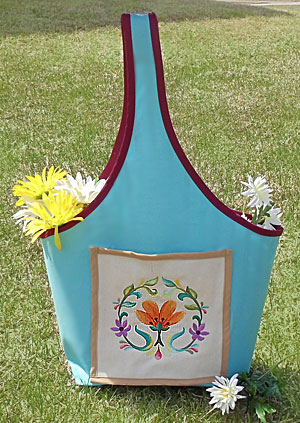
Transform two pillowcases into a fashionable and functional tote bag, complete with a handy little front pocket.
Bring this "dreamy" tote bag along with you to the beach, the gym, or the farmers market. It's lined with a second pillowcase for extra strength and support to carry all your goodies.
Read below for free project instructions!
Supplies
Supplies Needed:
**Two standard size pillow cases (ours are 20 inches by 30 inches) - one solid color for outer shell and one print for the inner lining
**3/8 yard sturdy fabric like denim, twill, or lightweight canvas (we used denim)
**9 inch by 9 inch piece of print cotton for pocking lining (we used quilter's cotton)
**Two yards (20 inches wide) medium-weight fusible interfacing or backing
**Lightweight cutaway stabilizer (we prefer Floriani No-Show Mesh)
**Medium-weight cutaway stabilizer
**Temporary spray adhesive
**Air-erase pen (or other marking tool)
**Extra-wide double fold bias tape
Designs used:
Spring into Color Flower Circle (Medium)
Cyclamen (Vintage) (Large)
These designs are also available in the following design packs:
A Spring into Color Design Pack - Large, Medium, Small
Choosing Designs:
Pillowcases are typically made from a percale weave of cotton. This sort of weave is prone to puckering and rippling, so choose light and airy designs. Select designs that have open areas (where the fabric shows through) and are composed of light and simple stitches, such as running stitches, blanket stitches, and decorative "vintage" looking stitches. Here are a few design suggestions that would work great on this tote: Signs of Spring Redwork, Vintage Feathered Friends, and Sweet Dreams Butterflies.
Designs that are complex (those with high stitch counts, or a lot of small detail) don't work well on a percale weave, so they won't be the best choice for this project. However, complex designs can be used on your pocket fabric -- if you are using a sturdier fabric such as denim, twill, or lightweight canvas.
Finished Size:
14 inches wide by 24 inches high by 6 inches deep
Designs Used
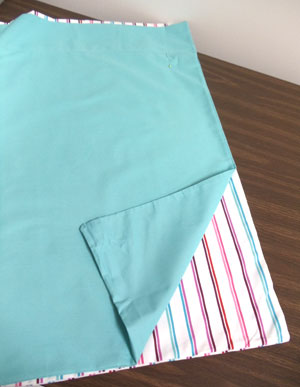
To begin, we will trim the pillow cases. Align the two pillowcases with the open ends together.
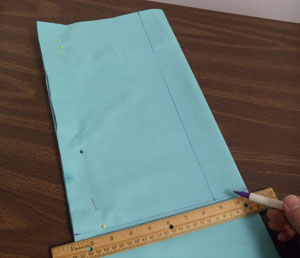
Fold the cases lengthwise with the long side edges aligned. Lay the cases flat with the open ends at the top and the folded edge on the right, pin in place. Using an air erase pen (or other marking tool), measure and mark the center of the left and right side by dividing by two. Draw a line to connect the marks, then, measure and mark in one inch along the horizontal line you just drew, starting at the right. Measure and mark in one inch along the top edge of the cases starting at the top right corner. Then, draw a vertical line to connect the two marks.
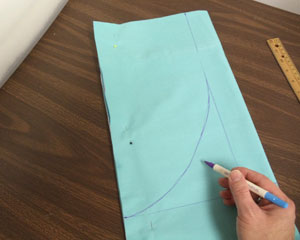
Draw a curved line starting at the far left of the horizontal line ending about 5 inches down from the top edge along the vertical line.
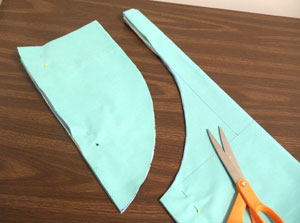
Cut along the curved line and continue up the vertical line to the top edge - cut through all layers.
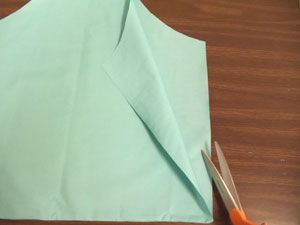
Remove the pins and lay the solid colored, outer shell, pillowcase flat. Trim off the seams along each side edge of outer shell pillowcase -- leave the bottom seam intact.
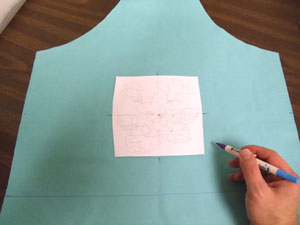
Lay the outer shell pillowcase flat. We are embroidering a design directly onto one side of the outer shell and then adding an embroidered pocket to the opposite side.
Measure and mark up 3 inches along each side starting at the bottom seam. Then, draw a line to connect the marks - the area above the line will be the embroidered area. The area below the line will be folded later on to create the bottom of the tote. Do this on both sides of the outer shell pillowcase.
For the embroidered side (no pocket) of the outer shell, create a paper template of the design by printing it at full size using embroidery software. If you don't have embroidery software, you can cut a piece of paper the shape and dimensions of the design to help with placement and centering. If you'd like a recommendation for an embroidery program that can make templates, consider Embird from www.Embird.com.
Position the template on the fabric how you want it. We positioned the design with the outer edges of the design about 3 inches from the line and centered it side to side by measuring equal distances between the outer edges of the design and the edges of the fabric. Poke a hole in the center of the template and mark the fabric. Also, mark the horizontal and vertical axis points.
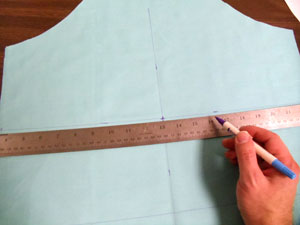
Remove the template and draw lines to connect the marks. These lines will be used for hooping.
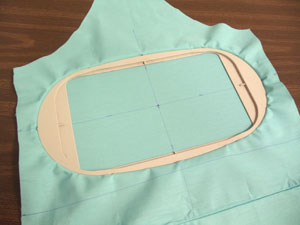
Spray a piece of medium-weight or lightweight cutaway stabilizer (we prefer Floriani No-Show Mesh) with temporary adhesive and smooth the fabric on top. Hoop the fabric and stabilizer together by aligning the marks on the hoop with the lines on the fabric. Attach the hoop to the machine and load the design. Move the hoop so that the needle is directly over the center point on the hoop. Embroider the design.
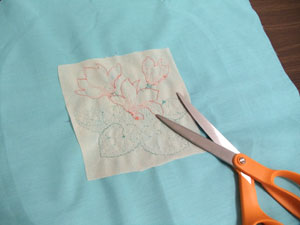
When the design has finished, trim away the excess stabilizer on the back of the embroidery.
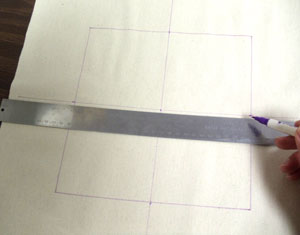
Now we will prepare the fabric for the pocket. We are embroidering a design that has filled areas and lots of detailed color, so we chose a sturdy denim fabric which will nicely support the stitching.
Draw a 9 inch by 9 inch square on the fabric. Measure and mark the center of each side of the shape by dividing by two. Draw lines to connect the marks - where the lines meet is the exact center of the shape.
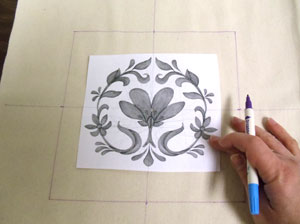
Create a paper template of the design, poke a hole in the center, and align it with the center point on the fabric. Make sure the design fits well within the shape - there should be at least one inch of space between the outer edges of the design and the edges of the fabric. Spray a piece of medium-weight cutaway stabilizer with adhesive, smooth the fabric on top, and embroider the design just as you did earlier.

When the design has finished, trim away the stabilizer on the back of the embroidery, and cut out the shape.
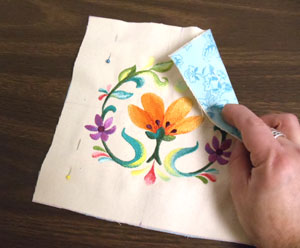
To prepare the fabric for the lining of the pocket, cut a 9 inch by 9 inch piece of cotton fabric (we used quilter's cotton). Align the fabric on the back of the embroidered pocket piece with the wrong sides facing and pin in place.
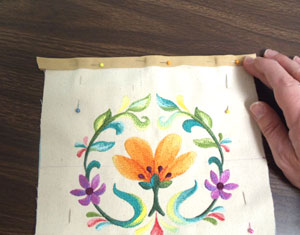
Cut a length of bias tape to cover the top edge of the fabric. Wrap the tape around the top edge of the fabric, pin in place, and sew a seam along the inner edge of the tape.
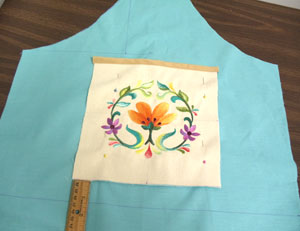
Place the pocket on the outer shell fabric (opposite of the embroidered side). Position the pocket about 3 inches from the bottom line and center it side to side by measuring equal distances between the outer edges of the pocket and the edges of the fabric. Pin in place.
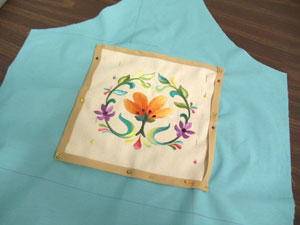
Wrap bias tape around the side and bottom edges of the pocket, pin in place, and sew a seam along the inner edges of the tape along the side and bottom edges of the pocket only.
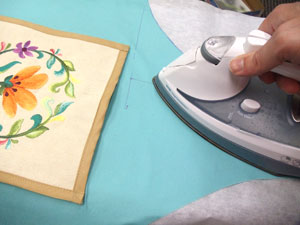
Next, lay the fusible interfacing (or backing) flat with the adhesive side facing up. Lay the outer shell fabric on top with the wrong side facing down. Iron the fabric to the interfacing by following the manufacturer's instructions and then trim off the excess by following the outer edges of the fabric.
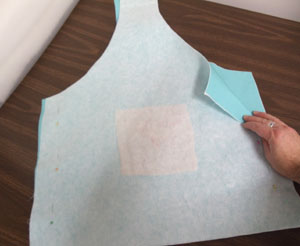
Align the fabric together, right sides facing, by folding it at the bottom seam. Sew a 1/2 inch seam along the straight side edges only - do not sew along the curved edges. Also, sew a 1/2 inch seam along the top edge (the top of the straps).
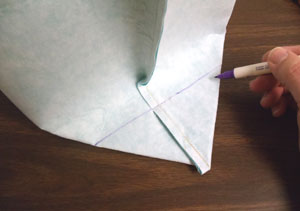
Pinch the bottom corners together and align the side seams with the bottom seam. Measure and mark a 6 inch line perpendicular to the seam at each corner. Then, sew a seam along each line.
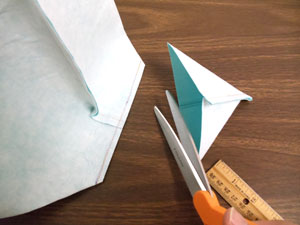
Trim off the corners leaving about 1/4 inch of excess and turn the outer shell right side out.
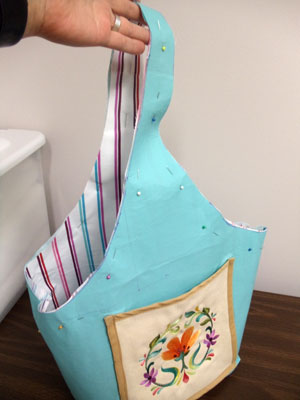
Align and sew the fabric and prepare the bottom corners of the inner lining just as you did with the outer shell. Then, insert the inner lining inside of the outer shell with wrong sides facing, align the seams, and pin in place.
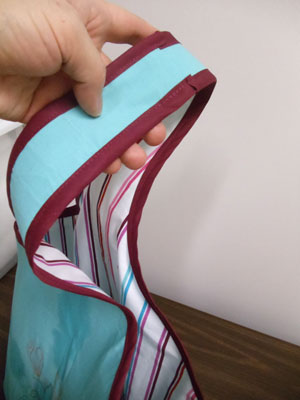
To finish the tote, wrap bias tape around the raw edges of the tote, pin in place, and sew seams along the inner edges of the tape.
And your tote is complete!
